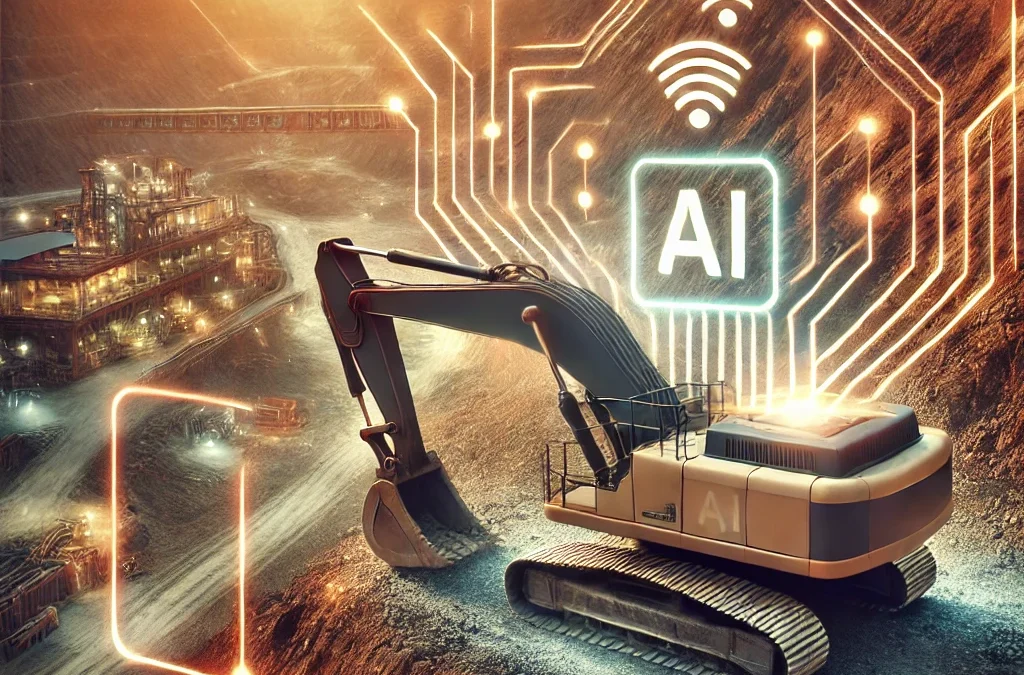Artificial intelligence (AI) is revolutionizing mining operations, but few people understand the silent hero behind its success: data labeling. Autonomous data labeling—powered by AI—is not just a convenience; it’s the backbone of high-performing machine learning systems in mining. Here’s why it’s the most underrated but crucial aspect of modern mining technology.
1. What Is Data Labeling, and Why Does It Matter?
Data labeling is the process of annotating raw data (images, video, sensor readings) to make it usable for machine learning algorithms. In mining, this could mean labeling:
- Equipment States: Identifying whether a GET is intact, worn, or missing.
- Rock Classification: Distinguishing oversized rocks from acceptable ore.
- Safety Hazards: Marking potential collision scenarios for autonomous vehicles.
Without accurate labeling, even the most advanced AI cannot function effectively. But here’s the catch: manual labeling is time-consuming, expensive, and error-prone, especially in dynamic environments like mining.
2. The Challenge of Labeling in Mining
Mining presents unique challenges for data labeling that other industries don’t face:
- Constantly Changing Environments: Dust, lighting conditions, and equipment movement create inconsistent data inputs.
- Sheer Volume: Mining sites generate terabytes of data daily from cameras, sensors, and drones.
- High Stakes: Mislabeling can lead to AI errors, putting safety and efficiency at risk.
Traditional manual labeling methods struggle to keep up, creating bottlenecks in AI implementation.
3. How Autonomous Data Labeling Works
AI-powered tools like Jebi Auto-Label are designed to automate and accelerate data labeling. Here’s how they work:
Real-Time Labeling
Autonomous systems process data streams as they are generated, annotating images or sensor readings in real time. For example:
- A camera on an excavator detects wear on a GET and automatically labels the severity of wear.
- A drone mapping an open-pit mine identifies and labels rock formations based on texture and size.
Feedback Loops
AI systems use labeled data to refine their algorithms, creating a continuous cycle of improvement:
- The more data they label, the better their predictions become.
- Errors in labeling are identified and corrected faster than with manual methods.
Edge Computing Integration
In remote mining locations, autonomous labeling can occur directly on-site using edge devices, reducing the need for cloud connectivity.
4. The Game-Changing Benefits of Autonomous Data Labeling
Why is autonomous data labeling a game-changer for mining? Because it doesn’t just improve AI—it transforms operations across the board:
1. Speed
Manual labeling takes weeks or months, delaying AI implementation. Autonomous systems complete the same task in real time.
2. Cost Efficiency
By eliminating the need for large teams of human labelers, companies save millions of dollars annually.
3. Scalability
Autonomous systems handle vast amounts of data, enabling mining companies to scale their AI applications without bottlenecks.
4. Accuracy
AI systems label data with precision, reducing the risk of errors that could impact operations or safety.
5. Adaptability
As mining conditions change, autonomous labeling systems adapt in real time, ensuring that AI models remain relevant and effective.
5. Beyond Efficiency: The Hidden Advantages
The benefits of autonomous labeling go far beyond operational efficiency:
- Enhanced Safety: By rapidly identifying hazards, autonomous systems help prevent accidents and injuries.
- Improved AI Models: More accurate labeling results in AI systems that are better at predicting failures, optimizing workflows, and detecting risks.
- Competitive Edge: Mining companies that adopt autonomous labeling can implement AI faster, gaining a significant advantage over competitors.
6. The Future of Autonomous Labeling in Mining
The potential of autonomous data labeling in mining is only beginning to be realized. Here are some exciting developments on the horizon:
1. Multimodal Labeling
Future systems will label data from multiple sources—cameras, LiDAR, and sensors—simultaneously, creating richer datasets for AI.
2. Human-AI Collaboration
Autonomous systems will work alongside human experts, combining the efficiency of AI with human intuition for even greater accuracy.
3. Cross-Site Learning
AI systems will share labeled datasets across multiple sites, accelerating learning and improving outcomes across the mining industry.
4. Industry Standards
As autonomous labeling becomes more common, industry-wide standards for data labeling will emerge, ensuring interoperability and consistency.
7. Conclusion: The Invisible Hand Behind AI Success
Autonomous data labeling is the foundation of AI-driven mining technology. Without it, advanced systems like predictive maintenance, collision avoidance, and resource optimization would be impossible.
At Jebi Technologies, we understand the critical role of labeling in AI. That’s why our Auto-Label solution is designed to empower mining companies to unlock the full potential of their data, transforming operations and driving success in even the most challenging environments.
